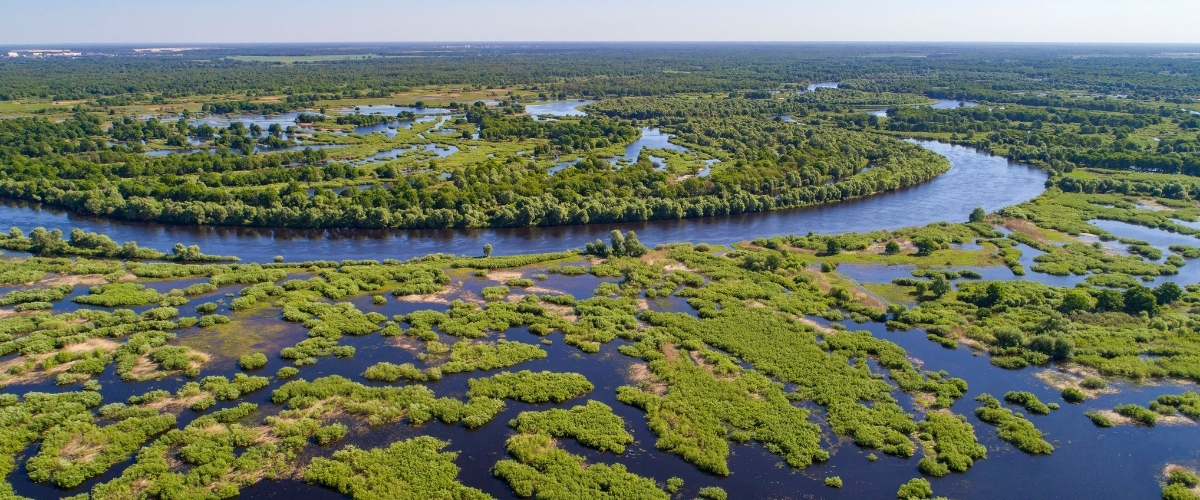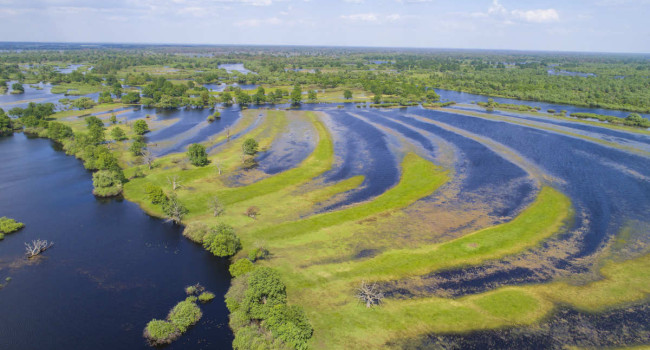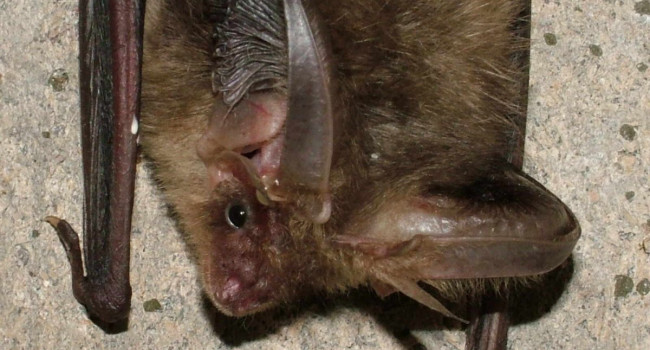
BTO in Belarus: the Polesia project
An experienced field biologist and analyst in the Framing Futures team, Adham takes a broad multi-taxa approach to understand how best to modify or restore landscapes for the conservation of biodiversity, adaptation to environmental change (e.g. climate change), the ecosystem services provided and the trade-offs between these. Adham is an expert at the use of passive acoustic monitoring to monitor a diverse range of often cryptic taxa.
Relates to projects
Back in March we were busily preparing for our first full field season of the Polesia: wilderness without borders project. We were attending long meetings and drawing out detailed plans of the logistics of field research in a project area the size of England. It was stressful, but there was the excitement of the upcoming several months, spent largely outside doing what I do and love best: collecting data in the field.
Supporting our colleagues in Ukraine
We have been working with Ukrainian and Belarusian colleagues in Polesia since 2019. We are appalled by Russia's invasion of Ukraine and stand in full support of those affected by this conflict.
Our project partner Frankfurt Zoological Society (FZS) has been working to get partners and staff in Ukraine to safety, though most remain on-site, providing refugees with resources and supporting the protected areas’ running costs at a time when other funding has been cut off.
We hope that the global support of Ukraine will help bring an end to this appalling conflict, and that we will be able to continue to work with our colleagues to learn about and protect the country’s precious habitats and wildlife.
If you would like to make a donation, visit the ZFS fundraising appeal.
Amongst other things, I was going to be leading teams deploying acoustic recorders to survey for bats, small mammals and nocturnal birds, setting insect traps in expansive near-pristine wetlands and deploying GPS tags on Greater Spotted Eagles.
Well… then you all know what happened. Travel plans were cancelled and we frantically drew up plans to keep the research going, whilst directing it remotely. Instead of getting excited over waking up to the explosive song of Thrush Nightingales and being lulled to sleep by burring Corncrakes, I was drawing up detailed manuals and schedules of when equipment would be deployed, by whom and where. All from my bedroom/home office, and all under the uncertainty of whether any research would be able to take place at all.
Luckily, due to the laws in Belarus and Ukraine, the remoteness of the fieldwork and the dedicated in-country field teams, our hard work was not in vain and, after a slight delay, fieldwork began!
The Endangered Landscapes Programme
This multinational, multi-partner project, funded by the Endangered Landscapes Programme and led by Frankfurt Zoological Society (FZS), aims to boost conservation efforts in the huge wet lowland region of Polesia. Polesia spans the border region of southern Belarus and northern Ukraine and contains the largest national park in both countries: the Chernobyl Exclusion Zone. The Exclusion Zone is an amazing example of how quickly nature can recover without human interference. The area now boasts unparalleled densities of Wolves and has been recolonized by Lynx, Elk and White-tailed and Greater Spotted Eagles, which now thrive there.
The exclusion zone is by no means the only part of Polesia to shout about, however, and until recently it was considered a degraded part of the region. Alongside the neighbouring Białowieża forest and Carpathian mountains, Polesia is one of the few remaining truly “wild” areas left in Europe and is one of the largest. It provides unparalleled space and habitat for wide-ranging animals to flourish.

A unique habitat
Polesia centres around the floodplain of the Prypiat river. The Prypiat is one of the last major rivers in Europe that has not been straightened or altered. It still maintains its natural hydrological regimes that are so important to wildlife. At Turov bird observatory on the Prypiat, up to 400,000 Ruff, 200,000 Wigeon and 25,000 Black-tailed Godwit have been recorded in the spring, using the floodplains to build up vital fat reserves on migration. This is the largest concentration of these species seen anywhere in Central or Eastern Europe. This is just one example of the natural wealth that this region holds and much of Polesia’s biological importance is still not understood. Only three years ago, one of Europe’s least-common bats, the Greater Noctule, was discovered to not only occur but to be breeding locally in Polesia. Since then, BTO-led surveys have found numerous sites that Greater Noctules use for foraging or breeding, showing how much we still do not know about this understudied region.
As with the majority of Earth’s wild places, Polesia’s habitats are under severe threat from human activities. Alongside increased wildfires caused by climate change and the expansion of intensive agricultural and forestry practices, Polesia is threatened by a huge infrastructure project: the E40 waterway. This massive man-made canal would stretch from the Black Sea to the Baltic, severing Polesia in half and disrupting the hydrology of one of the last remaining natural floodplains in Europe. Furthermore, this project involves dredging large stretches of the river running near the Chernobyl Exclusion zone, with potential life-threatening consequences as radioactive sediments from the accident are churned up.

Protecting the mires
We hope that research led by BTO and the conservation efforts by our partner organisations FZS, APB (Birdlife Belarus) and USPB (Birdlife Ukraine), will lead to strengthened protection of large swathes of the most important areas for biodiversity in Polesia. A large proportion of the research and conservation efforts are focused on one of the most special places in Polesia: the 100,000 ha Almany mires, a remote and relatively untouched bog (that’s about the same size as Hong Kong). In the summer months it is home to breeding Aquatic Warblers, Terek Sandpipers, Golden Plover, ducks, raptors, bats, small mammals and millions of insects (mostly biting, it seems). In the winter it’s a vast expanse of ice and snow which draws in hungry Wolves and Lynx searching for roaming Elk and deer. Almany mires will provide the heart of a one million hectare UNESCO world heritage site bid and a new national park. This, alongside other new national parks will make it more difficult for any damaging infrastructure and development projects to be undertaken.
As part of this research, over the summer months, local researchers deployed acoustic recorders to survey wildlife in over 200 points over the project region, resulting in a combined survey effort of over 8, 000 hours. The huge advantage of surveying using this method is that to achieve similar temporal coverage using traditional methods (e.g. through mist netting or point-counts), we would have needed a small army of field-staff; much like our brilliant volunteers at the BTO. There are very few countries (if any), however, that have such a skilled and dedicated citizen-science cohort. The main upcoming challenge will be to analyse all the acoustic data. This research is the largest systematic survey ever conducted in the region and will provide pioneering data on the distribution and composition of wildlife in Polesia.

Tracking the decline
We also GPS-tagged a further six Greater Spotted Eagles in July (now totalling 21 birds), including the first four in the exclusion zone. In addition, we fitted nest cameras to 15 nests of our tagged birds. With these data, we hope to find out why this species is declining in the region and what resources it needs to reverse these declines. So far, adult mortality seems to be very low, so it is likely to be a problem with breeding success or juvenile mortality, much like our own endangered Curlews.
The Polesia: wilderness without borders project may seem far-removed from the usual UK-focussed BTO research and monitoring. However, by learning more about the ecology of this wild region we can also unravel what natural processes are missing in the human-modified landscapes of Western Europe, thus better informing how to restore the damage done and conserve our threatened species. Furthermore, in my opinion, if BTO can contribute to building the knowledge and conservation action of one of Europe’s last remaining wildernesses, then we should do our utmost to do so.
Read more about the Polesia project and the Endangered Landscapes Programme. The Polesia project is supported by the Endangered Landscapes Programme, managed by the Cambridge Conservation Initiative in partnership with Arcadia – a charitable fund of Lisbet Rausing and Peter Baldwin.








Share this page